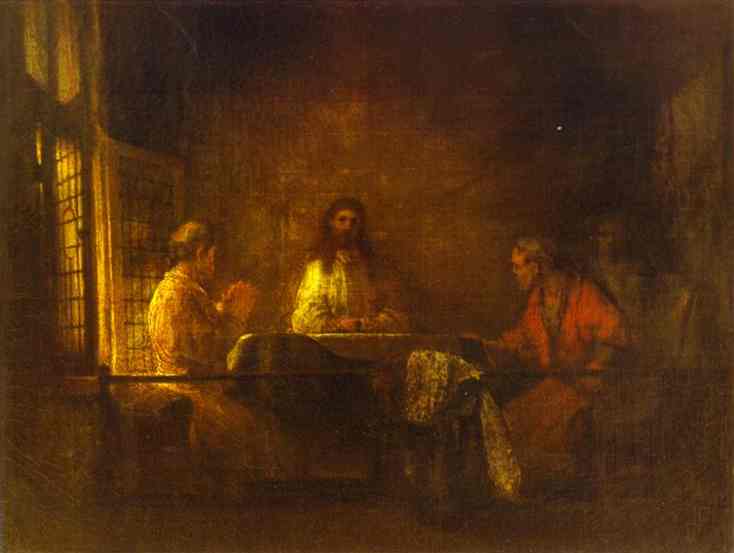Descrizione
Rembrandt’s The Pilgrims of Emmaus, painted in 1629, sits at the heart of the rich tradition of Baroque art, capturing not only the Dutch master’s technical prowess but also a profound exploration of spirituality and humanity. The scene from the Gospel of Luke, where Jesus reveals himself to his disciples after his resurrection, is a moment of intense emotion and recognition, and Rembrandt manages to capture this poignancy remarkably in his work.
The composition of the painting is notable for its use of space and placement of characters. In the center, we see Jesus, who, although not depicted with a divine halo typical of other religious works, emanates a light that separates him from the others. His posture is relaxed but authoritative, while the two pilgrims around him react in different ways. The pilgrim on the left, visibly surprised, has an expression of wonder that invites the viewer to share his revelation. In contrast, the other pilgrim, who is further to the right, seems to be about to rise, suggesting imminent action; his tense body evokes the urgency of the moment.
In terms of colour, Rembrandt uses a palette of warm, earthy tones, which allows for the emotional narrative of the scene to be heightened. Shades of ochre and brown dominate the characters’ clothing, contrasting with the deep blue of the background. However, it is the light that plays a fundamental role in this work. Rembrandt is known for his use of tenebrism, a technique that employs the strong contrast between light and shadow. Here, that light is focused on the face of Christ and the hands of the pilgrims, directing the viewer’s gaze towards the central revelation of the scene.
Attention to detail is a distinctive Rembrandt characteristic, evidenced in the expressions and postures of the characters, which reflect not only wonder, but also an intimate connection with the spiritual. Through his ability to capture the subtleties of human emotion, Rembrandt succeeds in making this divine encounter resonate on a personal level. It is not simply the revelation of Jesus that is presented in this work, but the very essence of the human quest for understanding and faith.
The painting also provides us with a cultural and historical context for the period. During the 17th century, the Netherlands was in a period of great intellectual and religious fervor, where the Baroque was manifested in art as a means of exploring the human condition, the sacred and the everyday. Rembrandt's work, in particular, reflects this transition and at the same time departs from typical representations of the sacred; instead of an idealized Jesus, he presents him as a human being who shares experiences, joys and sorrows with his disciples.
The Pilgrims of Emmaus is not only a religious masterpiece, but also represents the mastery of an artist who delves into the complexity of the human soul. The encounter of the divine with the human, beginning with the expression of wonder on the faces of the pilgrims, continues to resonate with modern viewers, highlighting the timelessness and relevance of Rembrandt's work in art history. This painting is not just a depiction of a biblical moment, but a mirror of the human experience, shining with the light of a deeper understanding of faith and revelation.
KUADROS ©, a famous painting on your wall.
Hand-made oil painting reproductions, with the quality of professional artists and the distinctive seal of KUADROS ©.
Painting reproduction service with satisfaction guarantee. If you are not completely satisfied with the replica of your painting, we will refund 100% of your money.

